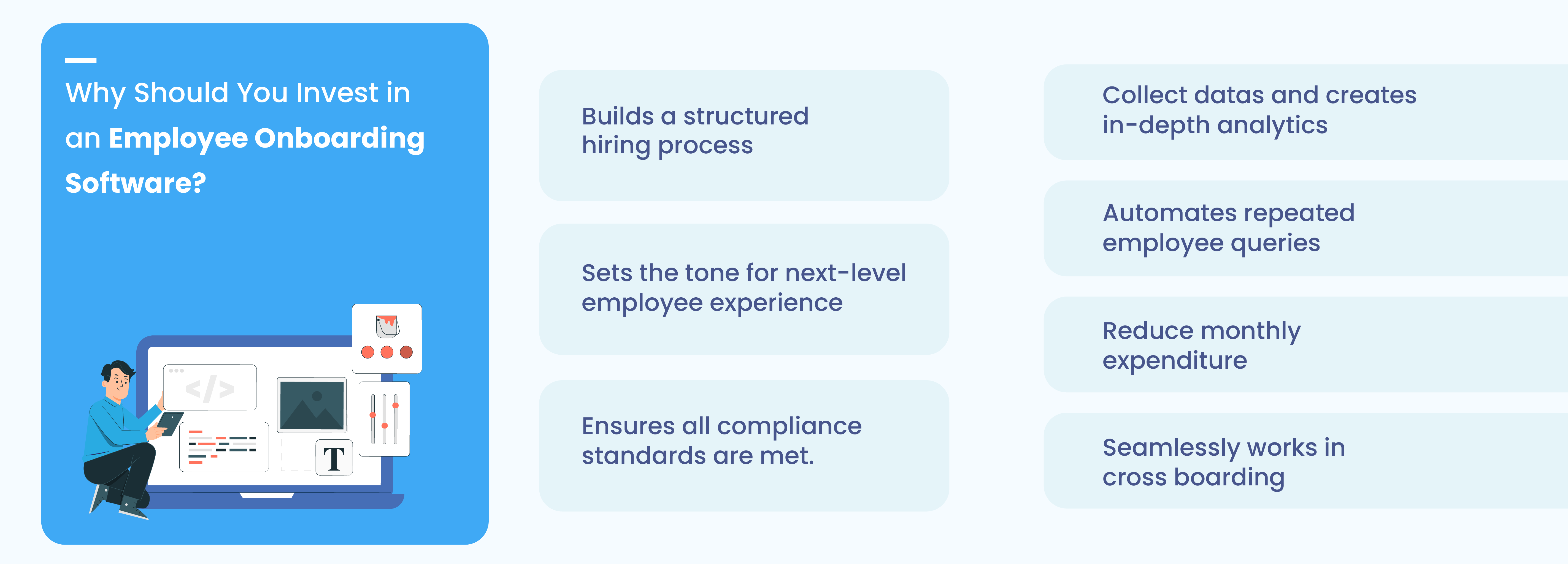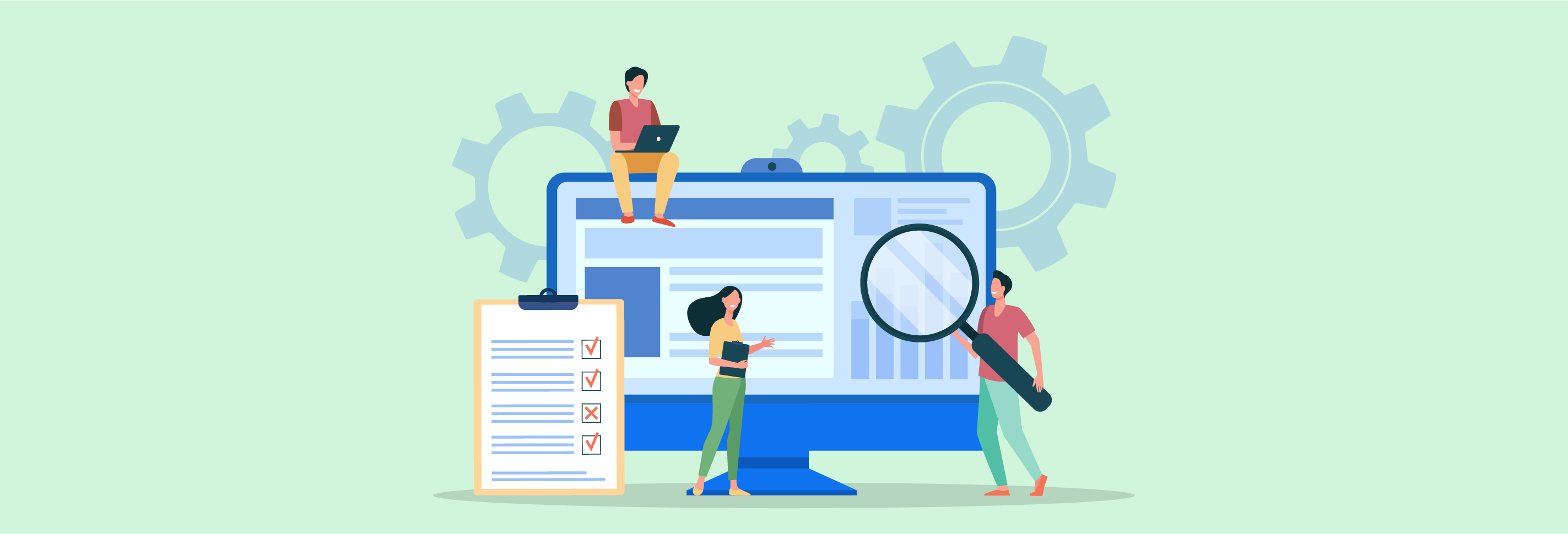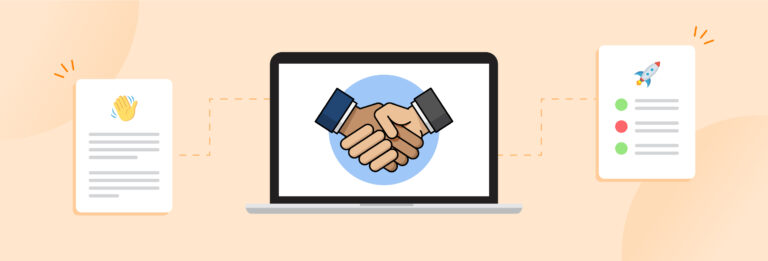Employee onboarding is a critical affair and often sets the tone for the kind of employee experience a new hire expects to get from the organization. However, it often comes with redundant and repetitive tasks that take away too much time from the HR. And this is exactly where an employee onboarding software comes into the scenario.
Read on to know what employee onboarding software is, the benefits it brings along, and reasons why you must buy employee onboarding software for your business.
Why is employee onboarding important?

Let’s start with a few statistics for this one.
66% of US workers feel disengaged at work. Millennials account for a major part of this with around 21% of them changing jobs within a year, which is nearly four times that of any other generational workforce.
A Glassdoor report states that if you have a great employee onboarding software or platform in place, it can boost employee productivity by about 70% and the retention rate by a whopping 82%.
These are some alarming statistics, both for the person hiring and the one hired. While the former loses on a perfect candidate whom they worked very hard to find, the latter gives up on a job that they spent a lot of time and effort to qualify for. It’s a lose-lose situation, and the reason may be bad employee experience, which starts with a haphazard and inconvenient employee onboarding process.
An Academy of Management Journal Study states that a new hire’s first 90 days are the most crucial in any company. This is because the first three months is when the new hire establishes a relationship with the company, its culture, its people, and their role. It is these three months that decide whether or not the new hire is going to stay for long and contribute to the success of the company and shoulder the failures.
Forbes suggests that if you have a proper onboarding program in place, it ensures that your new hires stay with the company for more than 3 years.
The key to creating a successful employee onboarding program is setting the expectations crystal clear right from the day the new hire joins and keeping all communication channels to deal with any doubts your new hire might have. And, like the above statistics have proven, it’s more than important to invest time and energy in an efficient employee onboarding program.
Need more statistics to help you understand why employee onboarding will remain a top priority and concern in 2022? Read this report to know!
How does proper onboarding boost engagement and retention?
Any employee onboarding process aims to make new hires comfortable and ensure high employee retention. The process begins during the first few days of joining. The most common mistake that many organizations make is to neglect the onboarding process the moment all paperwork is done on the very first day. They tend to forget that the onboarding process is crucial in engaging or disengaging an employee.
Engaged employees are highly motivated and enthusiastic. They always perform to the best of their abilities, accept new challenges, and deliver within the deadline. They always walk the extra mile because they care about the organization and their responsibilities. Consequently, the onboarding process is not just for the first day, but it should continue for the first few months. Your HR team must take the necessary steps to engage and retain the new hires during this time. They can:
- Start the onboarding process as soon as the employee is hired. Small gestures like sending an email before the first day or inviting them to the welcome portal of onboarding software will demonstrate your commitment towards the employee.
- Most new employees take time to adjust to their new environment and even longer to become fully productive members of the company. Your onboarding process can stop after the first few weeks but to ensure that new employees feel connected and supported, it’s vital to focus on relationship-building activities. The HR team must also take the initiatives to guide them through the HR employee onboarding software so that they understand the company’s policies and compliance.
- Strong relationships are necessary for new employees to feel supported and respected. Incorporating activities like assigning mentors, organizing personal meetings with the team, and participating in various events and company programs, will engage new employees faster, making them more comfortable in their workspace.
- Inspiration is a crucial element in engaging and retaining a new employee. This can be done by involving senior managers who can share their experiences and journey with new hires.
What is employee onboarding software?

Employee onboarding software refers to a platform that helps automate the employee onboarding process with an aim to reduce redundancies and repetitive onboarding tasks so that the HR department has more bandwidth. It can also be equipped with a conversational AI-powered HR chatbot which becomes a single stop for all employee queries and query resolution during onboarding.
Efficient employee onboarding software removes redundancy and increases relevance, speaks in a conversational tone, and understands and communicates in multiple languages to tackle the highly diverse culture of current companies. Such a tool is even more efficient when it is able to run in a hybrid setup, where the brain behind the process and monitoring is that of the HR and the execution lies in the hands of the software. Also, employee onboarding software should be able to store data in a safe and secure manner and use it to create actionable insights that help in improving the process.
Employee onboarding software aims to enhance the experience of the new hire, helping them understand the organization and engage better as their journey unfolds.
Typically, when you buy employee onboarding software, it comprises a digital dashboard that allows talent acquisition teams to easily communicate with one another and track the progress of each candidate as they proceed through the employee onboarding stage. This includes the welcome portal, compliance insight and tool, and integration into the payroll system.
Some of the best employee onboarding software even serves as a link between the organization’s candidate tracking system and performance management system, allowing for a smooth transition into the new hire’s work history.
It allows managers and senior management to meet the needs and concerns of their new hires without overburdening the HR or direct managers. Last but not least, employee onboarding software helps in compliance by ensuring that new hires’ information is not lost or has been updated correctly into the company’s database.
Why should you invest in employee onboarding software?

From what we’ve read so far, employee onboarding software helps automate the onboarding process and frees up the HR department’s bandwidth, in turn helping create a better experience for new hires. Let’s take a look at five more reasons why you should buy employee onboarding software and integrate it into your current business ecosystem.

Establishes uniformity in the onboarding process
Automation of onboarding helps HR managers focus more on the structuring and strategizing part, leaving the execution and analysis to the software. This tool also helps establish a standard operating procedure which the HR department can simply repeat for each employee. Also, with employee details and onboarding plans being stored in a centralized repository, there are fewer chances of data being misplaced and misused.
Enhances new hires’ employee experience
Employee onboarding is the first step to defining an employee’s experience within the organization and often sets the tone for the kind of run an employee expects to have with the organization. Efficient employee onboarding software ensures quick query resolution and provides an easy user interface with no communication lag, in turn, helping enhance employee experience for every new hire. In the long run, this experience helps establish trust and ensures employee engagement, ultimately improving the overall performance level.
Ensures compliance requirements are met
The right employee onboarding software won’t just automate tasks, but would also come equipped with information of the latest legal requirements and send repeated reminders to those responsible to ensure compliance standards are met with. As the new hires complete their documentation, transparency and visibility within the documentation processes can help improve the experience of the new hire.
Collects relevant data and provides insights
A major part of the hiring process is collecting the basic details and information of the new employees. This data is sensitive and requires security. A good employee onboarding software saves the data in a secure manner, but doesn’t do just that. Such software also uses this data to create analytics and insights that help create projections, which in turn help make the process more efficient and better with every hiring cycle.
Bridges communication gaps
This is one of the most basic yet most crucial aspects of an employee onboarding software. Since the software is constantly fed with updated information, it helps prevent communication gaps and other forms of miscommunication. Many of the answers to employee queries are constant and do not change unless there is a change in the company policy, its vision and mission. Having a platform that employees can go to for such repetitive queries helps establish uniformity in the answers that are given out. Employee onboarding software helps disseminate the same answers to a variety of people without changing the facts, thus preventing misinformation and confusion.
Helps in cost reduction
Having an employee onboarding software helps reduce the need for hiring more people in the HR department to tackle the new hires and existing employees. It automates a huge chunk of work that simply requires constant communication and removes misunderstandings and mistakes that reduce the cost of redoing the steps, whether it is an error in paperwork of an employee or a mistake in the details. In the long run, it helps establish a seamless and efficient onboarding process that also helps reduce the cost of employee turnover.
Works in case of cross boarding
Many organizations transfer employees within branches or departments through a process commonly known as cross boarding. While the brand information and the employee-organization relationship remains the same, geographical locations and new management and colleagues bring about the challenges that are almost similar to that of new employee onboarding. Employee onboarding software is instrumental in automating the cross boarding process and makes it easier for the transferred employees to gain access to the necessary information and learn the necessary steps to adjust well.
What to look for in employee onboarding software?

When buying an employee onboarding platform, following are some very basic things to look for.
Ease of use
An easy user interface that is not too much of a tech hassle for the new hires makes it easier for software to get accepted. The purpose of employee onboarding software is to help employees coming on board and not to intimidate them with a difficult procedure.
Cloud features
It is essential for employee onboarding software to be accessible regardless of the device or network an employee is using. Such software should be able to transcend geographical boundaries and making it available via cloud helps ensure it can be used even when new hires are not physically present in the workplace.
Interactive
Though not a mandate, if a software is interactive it is better. Some ways in which a software can be interactive includes being able to converse in multiple languages, gamifying a few aspects of onboarding, and speaking in a tone that mimics human conversation.
Reporting
Employee onboarding software should be able to generate reports for the HR department to take a look at and analyze. In order to increase visibility into processes, look for software that gives you easy-to-interpret reports accessible through a common dashboard.
Analytics
Employee onboarding tools should be able to use the available data and analyze it so as to project trends. This helps the HR department strategize better and recognize areas of improvement, in turn helping better the onboarding process.
Do you really need another software?

As per a Society for Human Resource Survey, nearly 23% of the new hires quit in the first six months due to a lack of clear instructions and guidelines.
In today’s fast-paced and challenging atmosphere, effective hiring and retention needs automation and a brilliant mind behind it to manage the progress. An employee automation software does that for you. You can either buy employee onboarding software or an employee experience platform that comes equipped with an onboarding module. In either case, it should aim to enhance the experience of the new hires and make them more aligned with the company goals.
Wondering where to start? Allow us to guide you.
Book a call with our product experts!
Schedule demoFrequently Asked Questions
Why is employee onboarding so important?
Onboarding is critical since it familiarizes employees with their roles, the organization’s beliefs, and the product(s)/ service(s) that the company offer(s)/ provide(s). It also engages new hires, resulting in dedicated employees who want to be a part of the team for long-term success.
What are the benefits of onboarding?
There is a myriad of benefits of a healthy onboarding process. From improving the employee experience and employee engagement to helping enterprises attract a talented workforce, building a corporate culture, and improving employee productivity, employee onboarding plays a decisive role.
What is the most important part of onboarding?
The most important part of the onboarding process is connecting the new hire with the organization. This can be done by introducing the new recruits to the team members and managers. The initial orientation sets the tone for them. Proper training exercises, role explanation sessions, and team integration activities also play a pivotal role in properly onboarding the new recruits and turning them into valuable assets.
How does onboarding impact the performance of an employee?
Organizations with a consistent onboarding process integrated into their company ecosystem see increased new hire productivity. This clearly implies that employees undergoing a longer onboarding session often tend to achieve full competency earlier than those working at an organization with shorter training programs.






